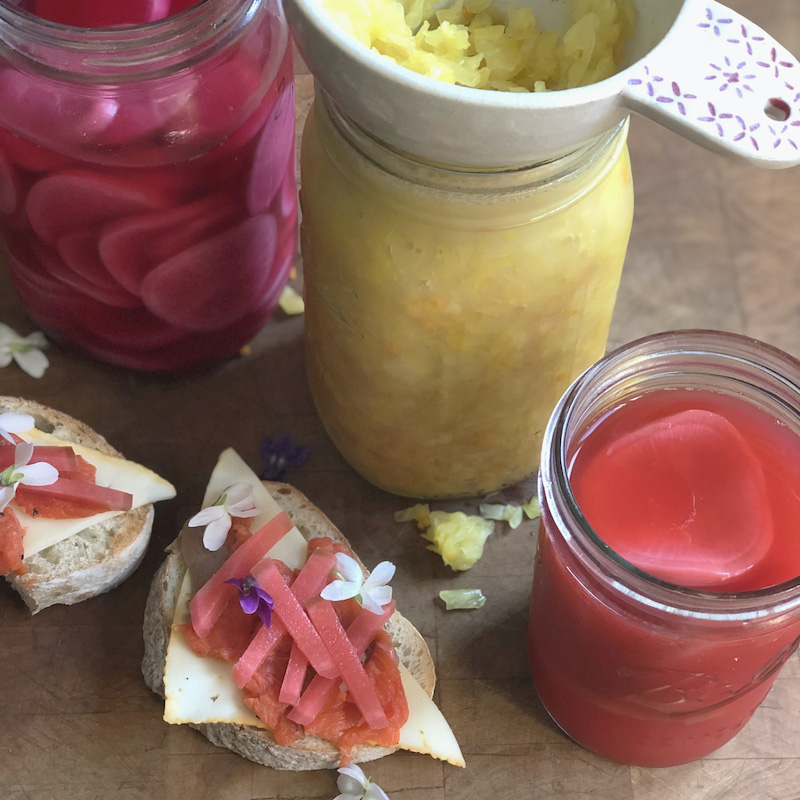
recipes
Golden Sauerkraut Recipe with Turmeric
Posted under: Homesteading, how to, healthy living, recipes

Posted under: Homesteading, how to, healthy living, recipes
Whether this is your first batch of sauerkraut, or you are looking to expand your current stock of sauerkraut recipes, golden kraut is a terrific option. Beyond the stunning golden-yellow color that lights up every dish, turmeric has a number of health benefits, and preserving qualities. In fact, I tend to never get mold or Kahm yeast on my turmeric sauerkraut because of its antimicrobial properties. Not sure what I’m talking about?
If this is your first time fermenting, check out this blog post all about sauerkraut, and even more tips in this post on how to ferment in mason jars. There are also numerous books on fermentation available, which is a good option if you’d like to learn a variety of fermentation techniques. It’s nice to have at least one book on fermentation in your library, because once you start fermenting foods, it can really take hold of you!
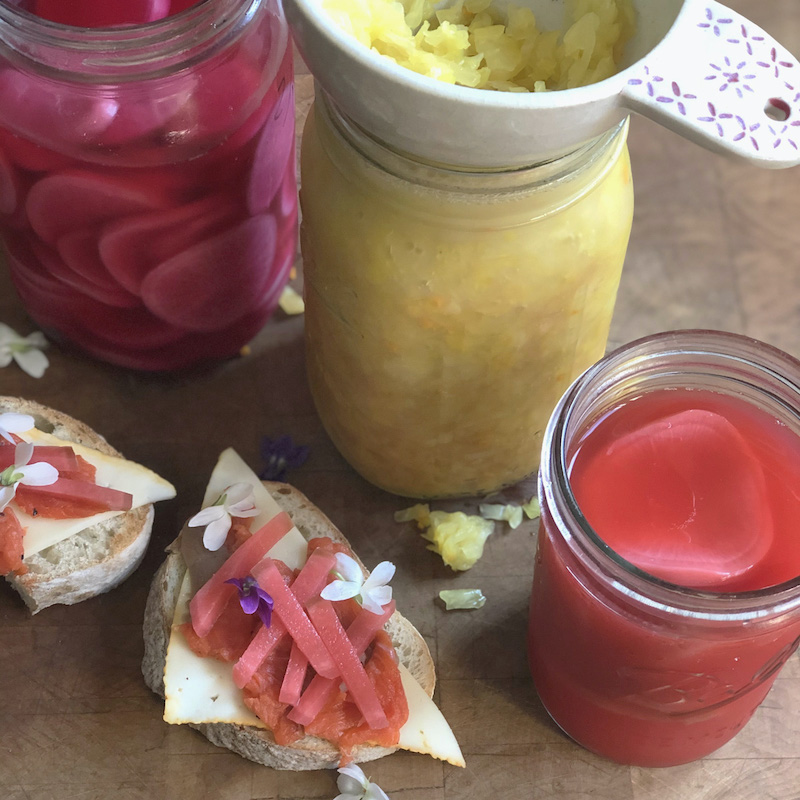
Turmeric, or Curcuma Longa, is part of the ginger family. Whether you are using fresh turmeric or dried turmeric, you will be on the receiving end of its anti-inflammatory properties. Turmeric also contains strong antioxidants, is antimicrobial, and a heart-healthy food. Paired with the probiotic qualities of sauerkraut, you’ve got quite the team! Turmeric is a natural dye and can be used as a vibrant yellow food coloring in lieu of commercial food dye. It is what gives curry its distinctive yellow color, and can be used for dyeing eggs, fabric, or even icing for sweets and baked goods!
In my small town, the best place to find fresh turmeric is in the co-op and local health food stores, located right next to the ginger. I have also seen it occasionally at the farmer’s market. - Tip: the best way to peel fresh turmeric (or ginger) is with a spoon. Use the lip of the spoon and scrape only the peel off. - If you simply cannot find fresh turmeric, try substituting in 1-2 tsp. of dried, start with less, as too much dried turmeric will add bitterness. Mix the turmeric in last to avoid dyeing everything yellow!
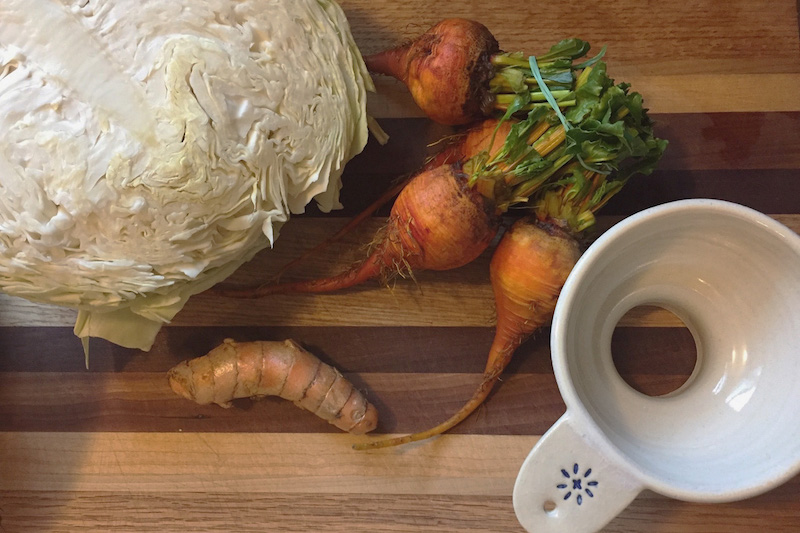
Ingredients:
• 2.5 lb Cabbage
• 4 Golden Beets, shredded (optional)
• 1 Thumb-sized piece Fresh Turmeric
• 1 Tbs. Sea Salt
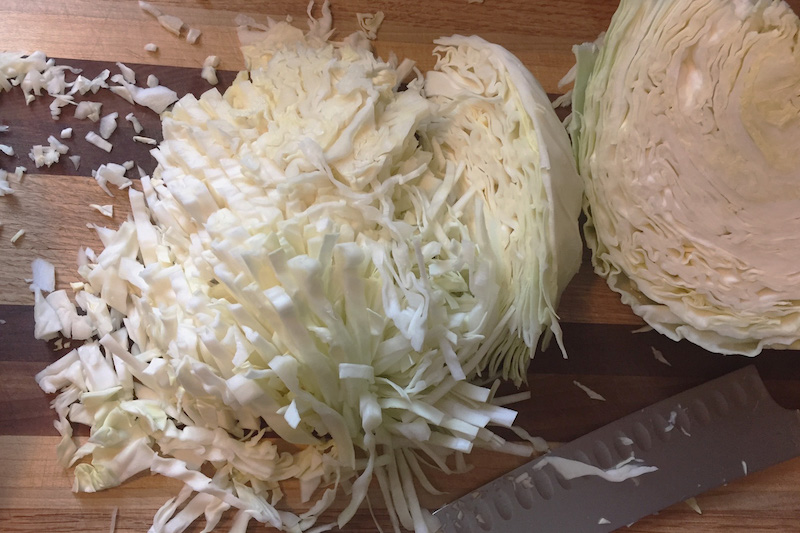
Directions:Quarter the cabbage, remove the core, and shred it finely using a sharp knife or cabbage slicer. Peel and shred beets (a cheese grater works best). Add to a large mixing bowl with the salt. Mix, pound, or squish for 10-20 minutes until reduced in volume and juice collects at the bottom of the bowl. Peel and finely mince the turmeric, add to the cabbage mixture and fold in to incorporate. Pack into a clean glass quart jar or crock, top with a whole piece of cabbage leaf and weight so that all veggies are under the liquid line. Ferment for 5-14 days* (to taste) on the counter, out of direct sunlight. Store in the fridge. Makes approx. 1 quart.
*Fermentation will occur faster in warmer weather.
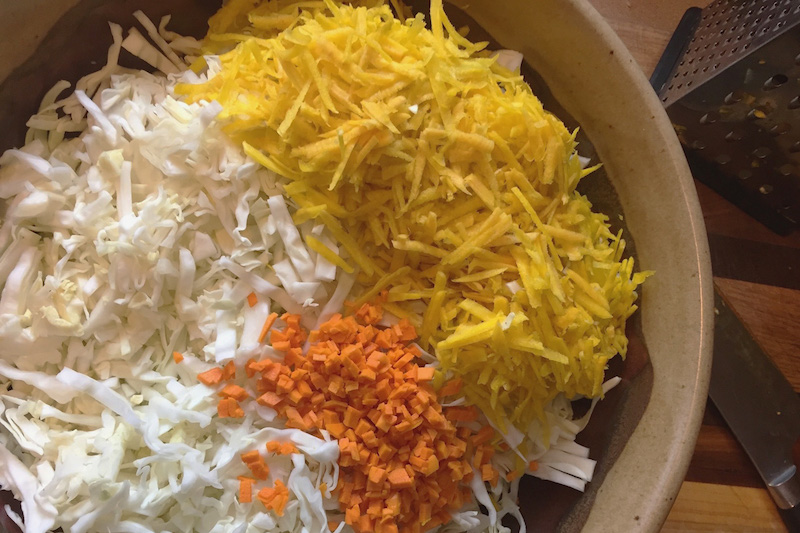
It’s easy to go wild when it comes to home ferments. If golden beets are not available, you may substitute in shredded carrots, or omit them entirely. You could shred an apple and add it to the mix. If you prefer a spicy golden kraut, try adding in a tablespoon of shredded ginger, minced garlic, thinly sliced onions, black pepper, or hot red pepper flake. Toasted cumin and mustard seed can also make a nice addition. Depending on what is available, your golden kraut could take on a number of variations. Enjoy experimenting, and sharing this wonderful fermented food!
Sienna Orlando-Lalaguna is the owner and maker behind Sienna Ceramics. She is a foodie, urban gardener, and plant-lover with a background in professional cooking. Her interest in food preservation stems from a love of local, organic produce, and a desire to extend the harvest from season-to-season. Sienna is interested in reviving the knowledge of fermentation, and bringing this ancient process back into modern communities like yours!
